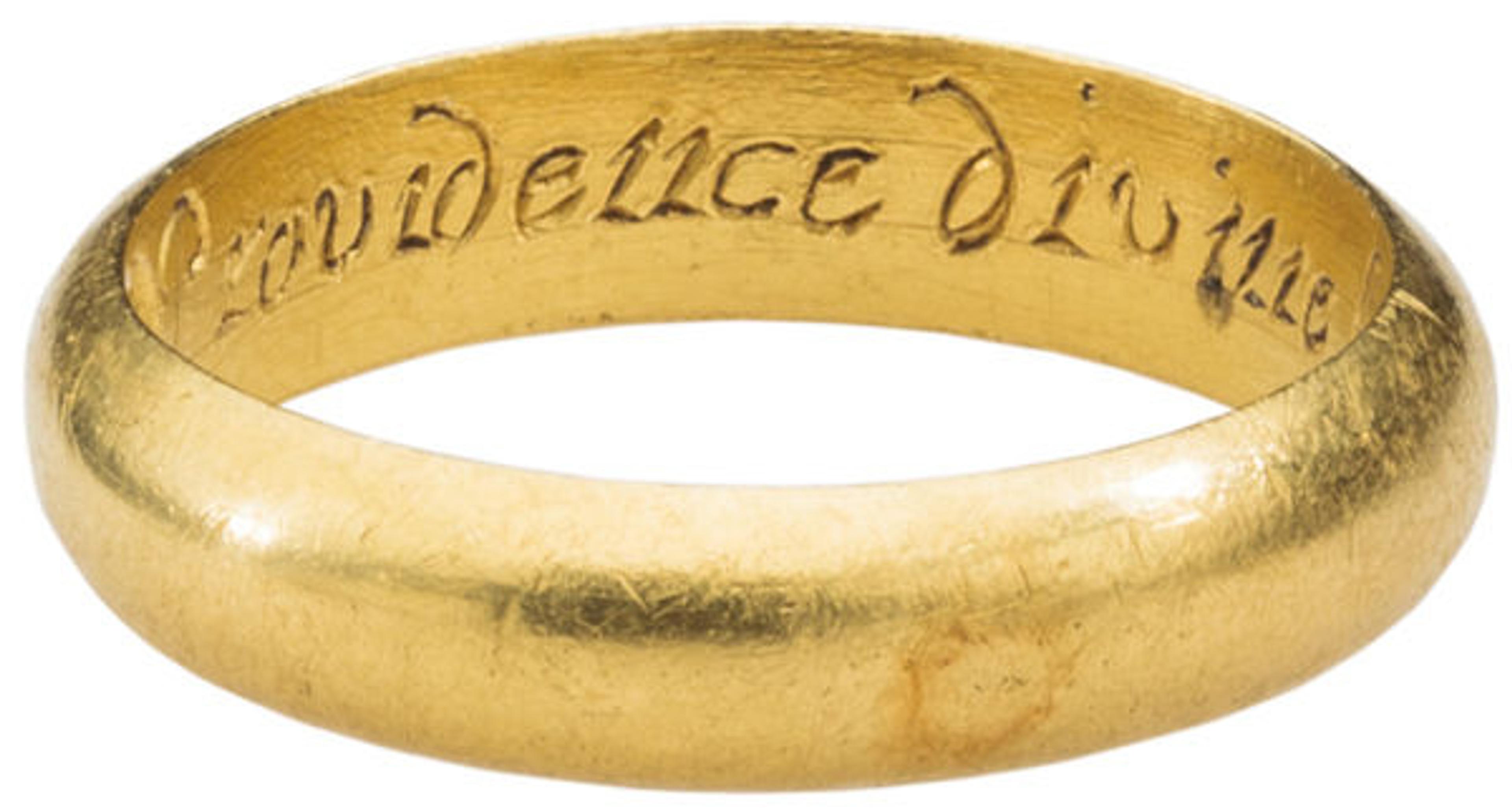
Two-finger ring, early 6th century. Byzantine. Gold, amethyst, emerald, glass, pearl; H. 27 mm.; L. 45.7 mm.; W. 11.79 g.; US 10 and 10.25, UK. Griffin Collection
«Handmade objects can bring seemingly distant times and places powerfully into the present. This is particularly true for finger rings—readily familiar and still widely worn by men and women—which are especially effective at reaching across the ages. While fashions, techniques, and technologies have changed dramatically over the centuries, the essential ingredients of the finger ring, consisting of the hoop, bezel, and shoulders, have remained the same for millennia. »
Many visitors to the exhibition Treasures and Talismans: Rings from the Griffin Collection, on view through October 18, 2015, have remarked upon how modern some of the rings on view look and feel. Sometimes form and decoration express the strongest connections. At other times, the sentiments that the rings convey feel contemporary. Today I highlight three rings that forge especially strong links between the past and present.
One doesn't have to look far to find contemporary analogs for some of the types of rings included in the exhibition. The beautiful Byzantine two-finger ring, shown above, which many visitors have admired, is especially striking . Created from two hoops that have been soldered together to fit adjacent digits, this ring is a fine example of a ring type that was popular throughout the late Roman Empire and into the early Byzantine era, a period roughly encompassing the first through sixth centuries A.D. These rings were produced in significant numbers in the eastern Mediterranean. Today, two-finger rings are staging a comeback, and can be found in a wide variety of types. Perhaps most famously, Beyoncé wore a two-finger ring that sported a jeweled image of the Brooklyn Bridge.
Ritual and tradition are intimately connected to the life of rings. In our own day, as in earlier periods, rings and vows are closely connected, with rings serving as a tangible, material reminder of a vow or a promise, as in the case of the wedding ring. One of the more spectacular rings in the Griffin Collection explicitly conveys the sentiments attached to such objects by their owners. The ring, probably fashioned in fourteenth-century Italy, features a sapphire inscribed with the Arabic name Abd as-Salam ibn Ahmad.

Inscribed sapphire ring, late 14th century (setting); 10th century? (sapphire). Italian. Gold, sapphire; Height 30.8 mm; hoop outer diam. 27.89 mm; bezel 16.15 x 17.4 mm; weight 23.5 grams; US size 7.25; UK size O. Griffin Collection
The stone might have been engraved centuries before the ring was created and was clearly highly prized. Sapphire, which was quarried in Ceylon, Arabia, and Persia, came west through trade. In medieval lapidaries, the stone was associated with chastity and purity. The inscription around the band reads: "For love you were made and for love I wear you." While we will never know the identity of the original owner, the inscription offers a powerful testimony to the memory the ring was meant to engender.
By the Elizabethan era, the practice of bestowing simple gold rings as tokens of friendship, affection, and love had become well established. Many of these rings, often referred to as "posy" rings, after the word poesie, or poetry, feature inscriptions that resonate to this day. Their inscriptions are typically concealed inside their bands, like in the Renaissance posy ring shown below. The sentiments they expressed, like "Providence divine hath made thee mine," would be known only to the wearer.

Renaissance posy ring "Providence Divine Hath Made Thee Mine," ca. 1600–1650. British. Gold; Circumference 62 mm.; weight 9 g.
The selection of rings on view in the exhibition offers tangible reminders that people have always sought to forge bonds across time and distance, and often looked to the ring, that most deeply personal form of jewelry, to connect with those they hold dear.